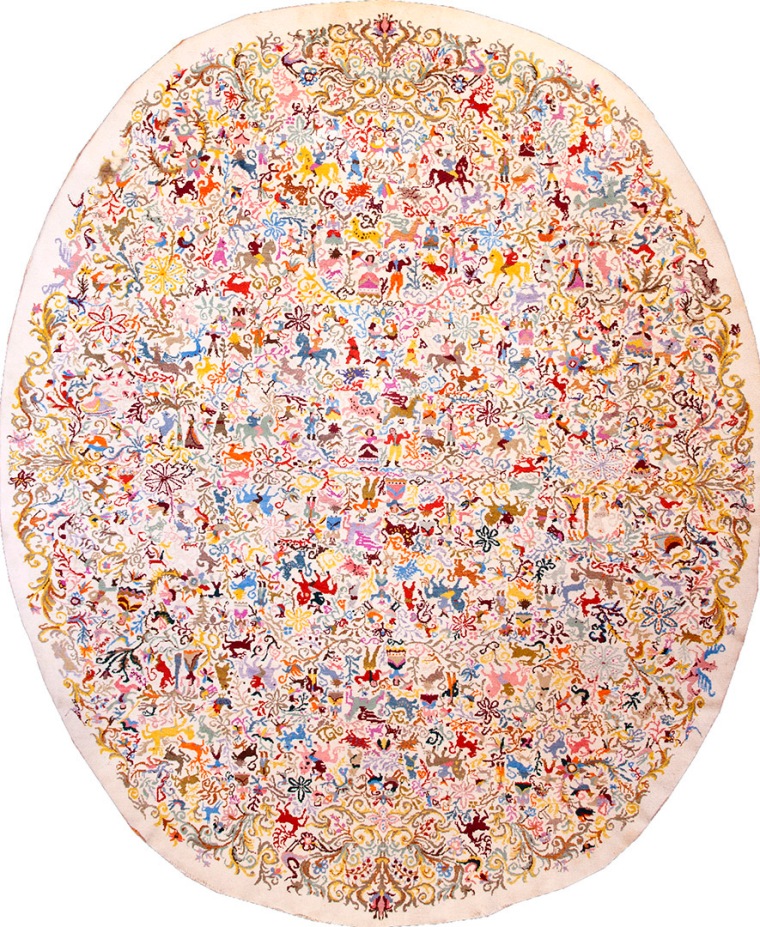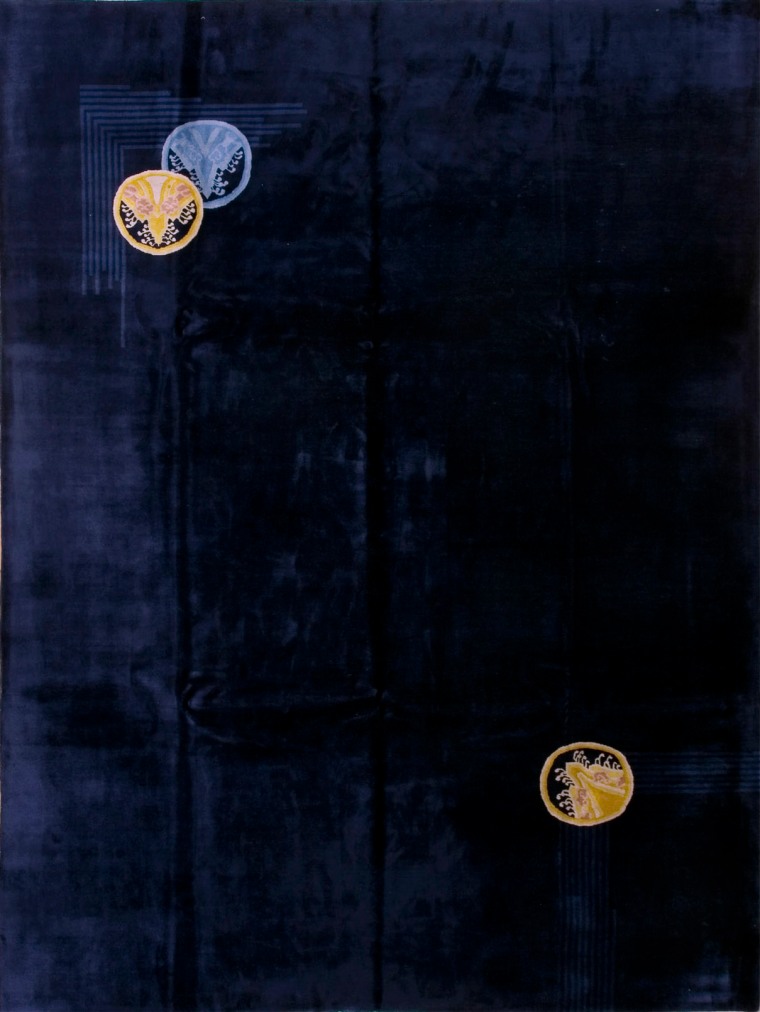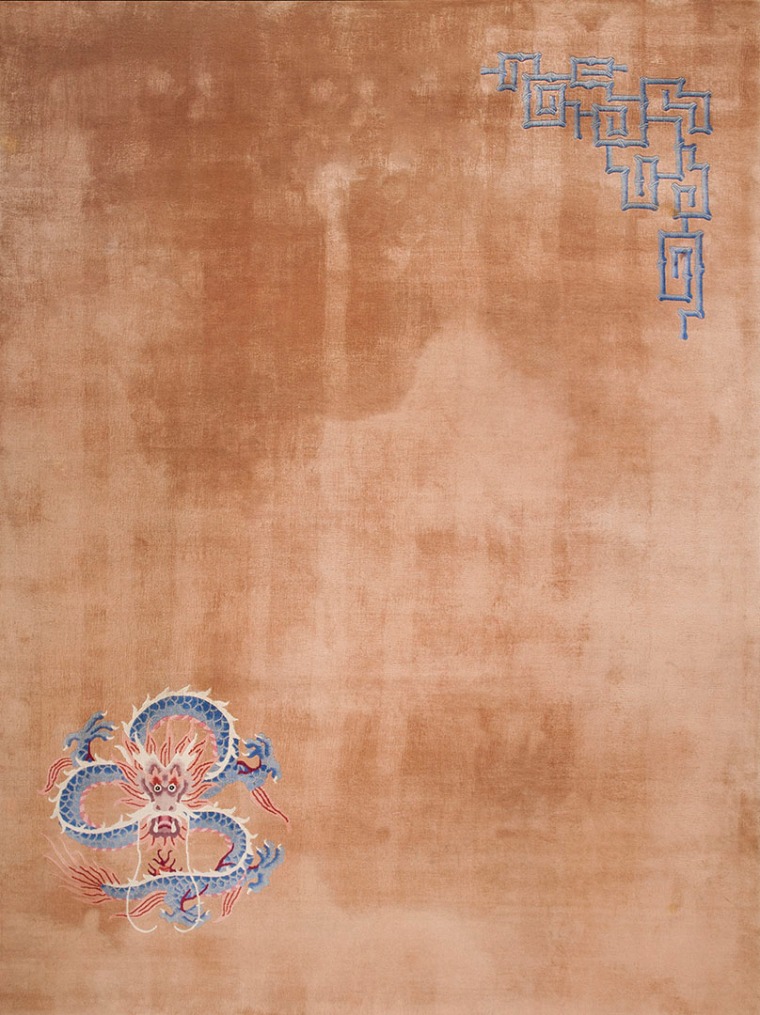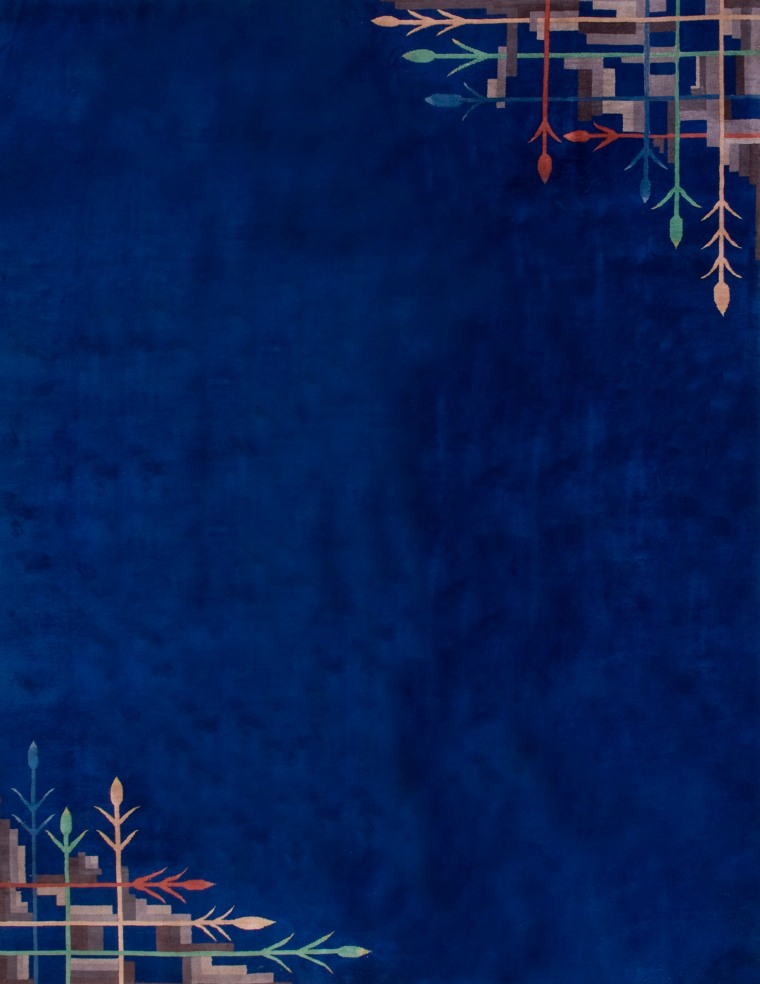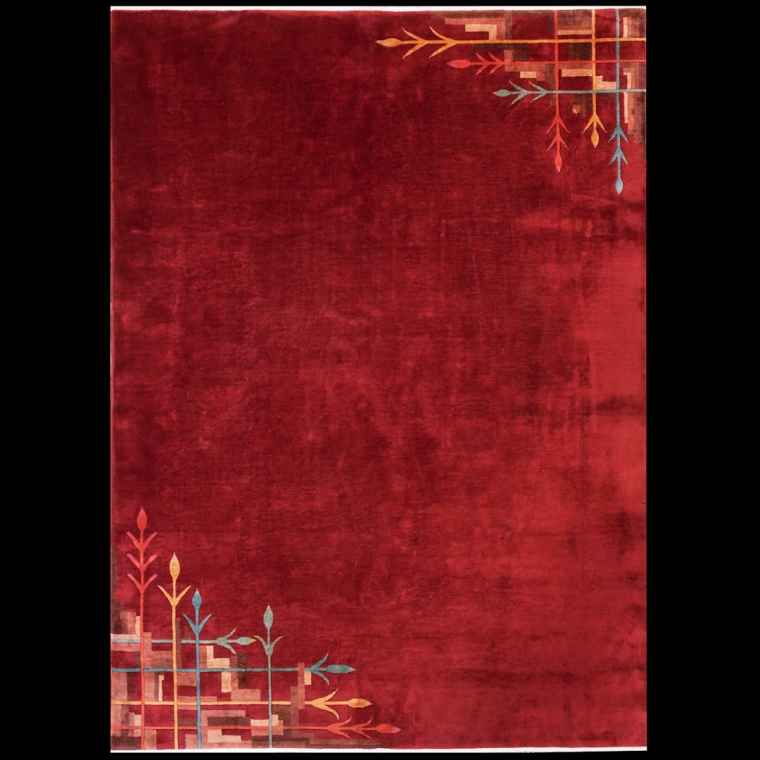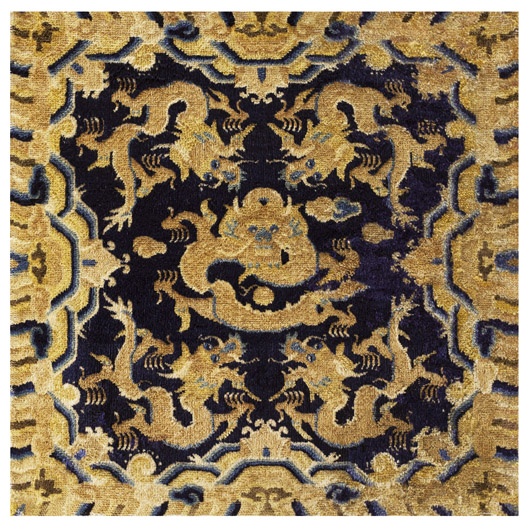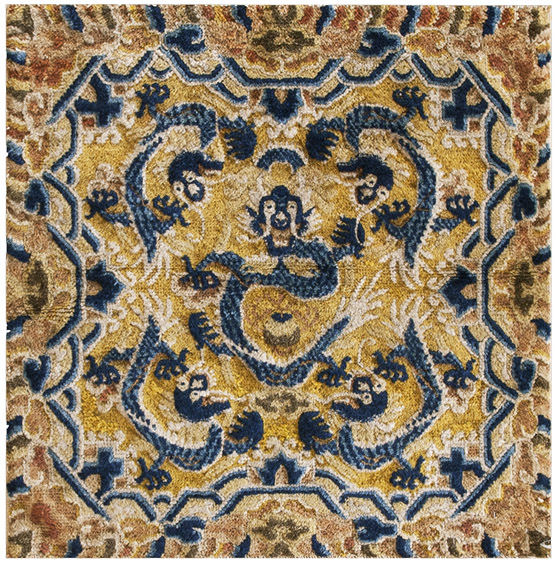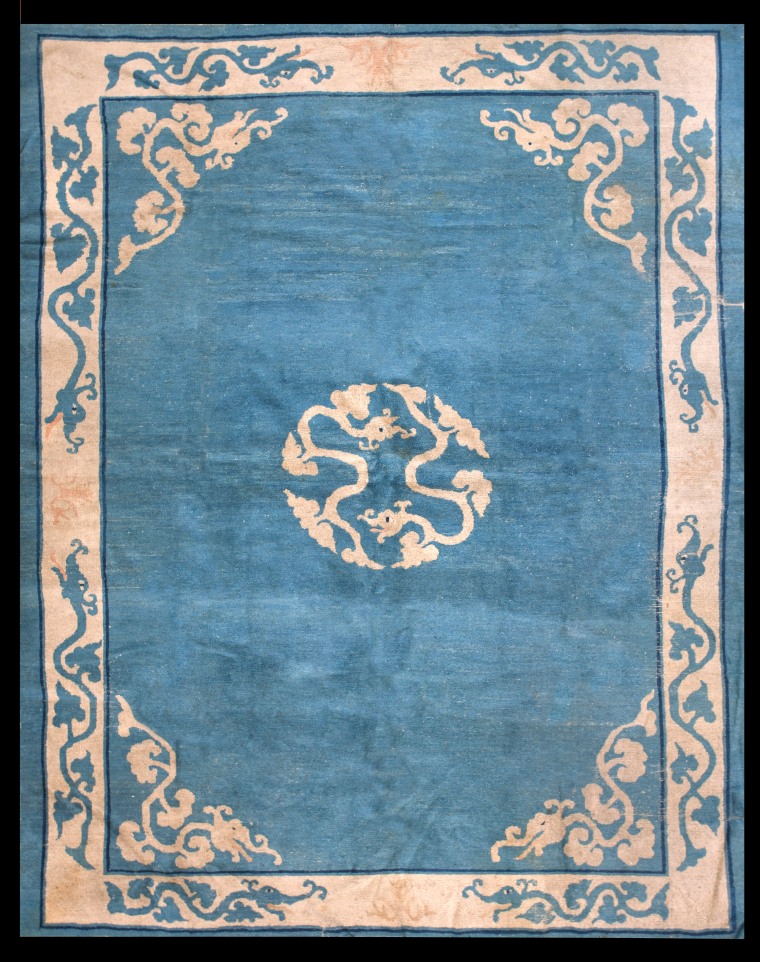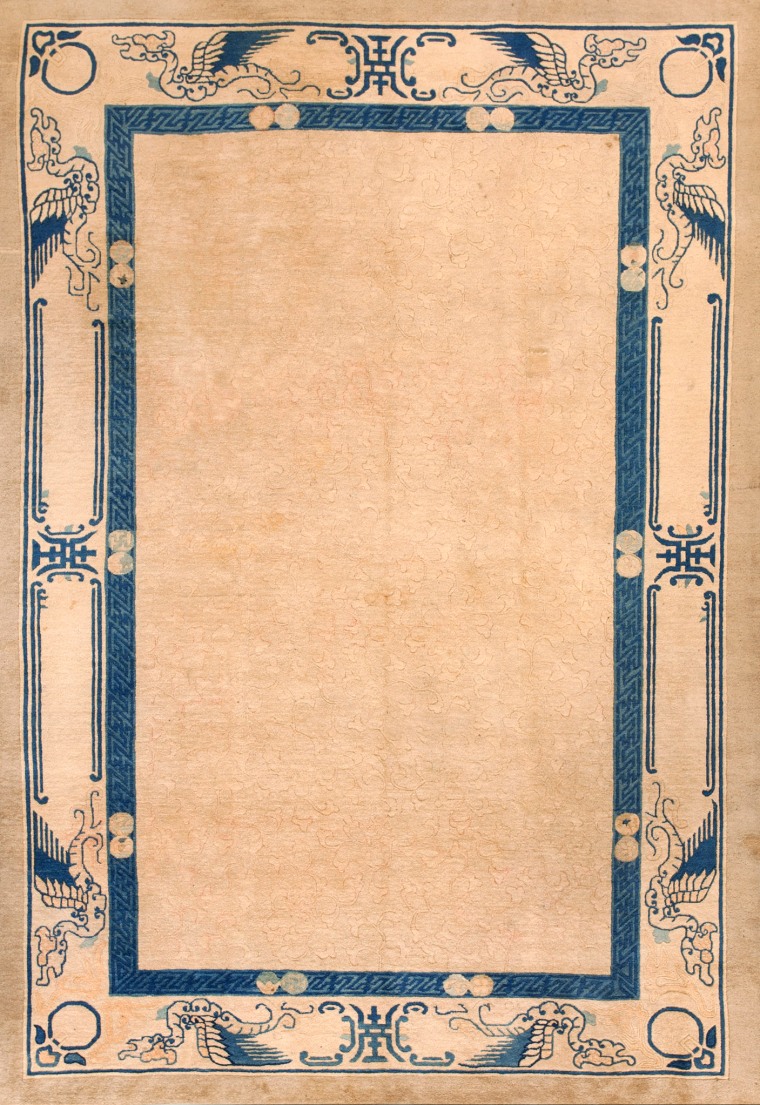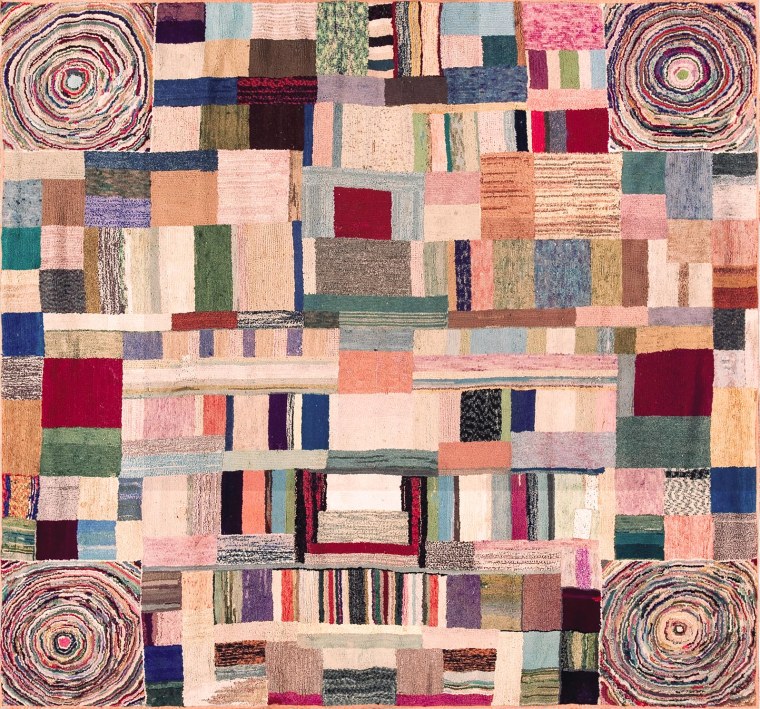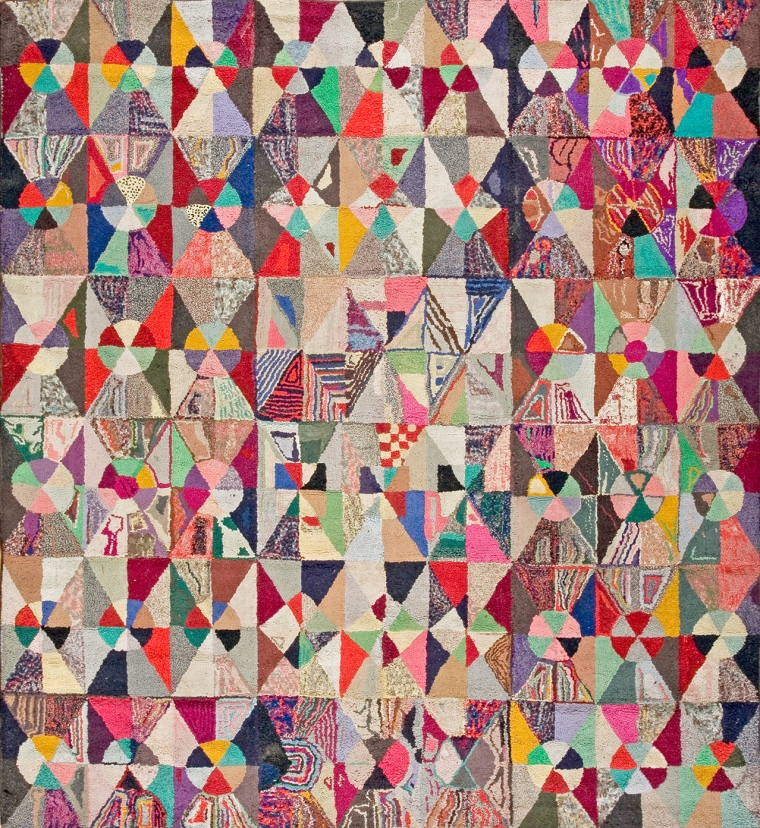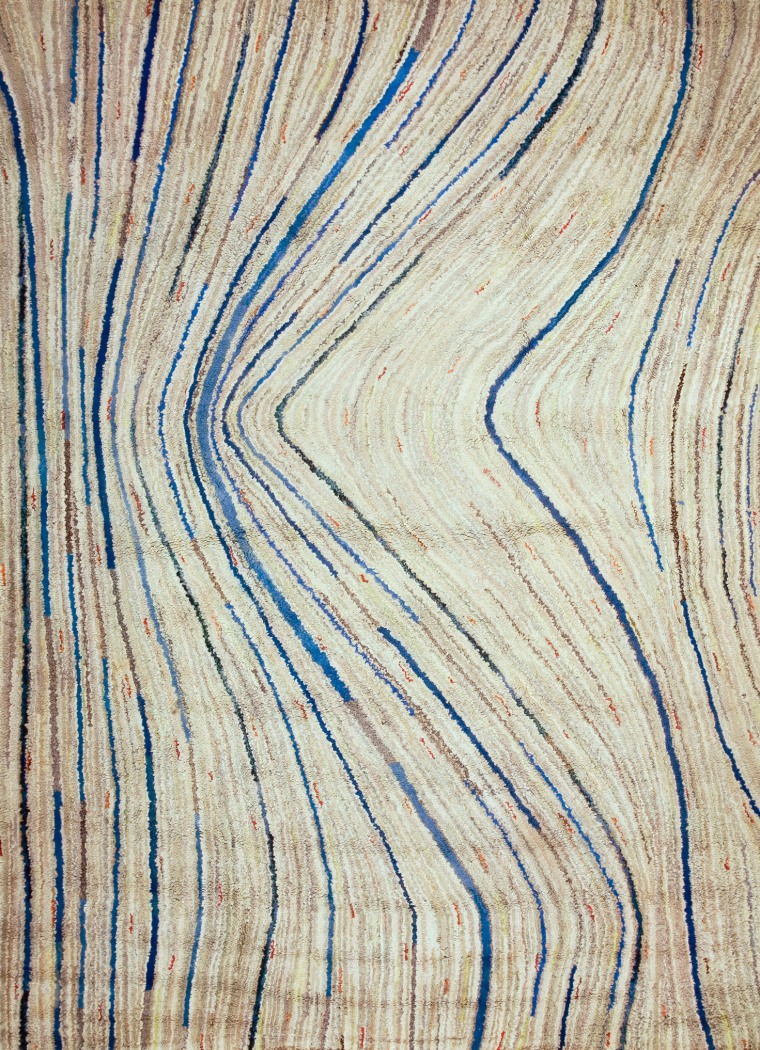Two vintage mid-20th century Ecuadorian Carpets Designed by Olga Fisch.
Of Hungarian origin, Olga Fisch(1901-1991) emigrated in 1933, first to Morocco and in 1939 to Ecuador, head of the political instability wracking Europe. Already an artist and collector of folk art, Fisch quickly took to the local arts and crafts available in the Quito markets. She was inspired by primitive, folk and paleolithic cave art and established a workshop creating knotted pile carpets to her individualistic and unique designs. The firm continues today, as does the museum of (primarily) Ecuadorian folk art. Only domestic sheep wool is employed and the rugs are firmly symmetrically (Turkish) knotted on a cotton foundation at a density of 60,000 knots per square metre or about 40 knots per square inch. It takes four weavers about six weeks to complete a 9’ by 12’ carpet.
Our two carpets, both from the 1950’s, are in her most popular and iconic -patterns. Number 21953 (12’ by 16)’ in the “Caverna” pattern, displays, on an ivory ground, and without borders, an agitated congeries of stick figures of hunters and prey, primarily deer, adapted from the Paleolithic cave paintings of Lascaux, discovered in 1940 and incredibly influential in mid-century art. Whereas most examples are in the 9’ by 12’ or 10’ by 13’ formats, this is certainly one of the largest renderings of the pattern. The increased size allows the larger hunters and animals free movement, and increases the impact of the individual figures. Small variants were also woven, with only a few animals, also on a beige ground.
Our other carpet, number 21802 (11.0 x 13.4) is a rare oval creation with the “Cabalito” pattern inspired by the folk embroidery on the “danzantes’ participants in the Corpus Christi processions from Cotopaxi, Ecuador. A number of these costumes are in the Olga Fisch Folk Art Museum in Quito. The pattern densely fills the ivory field with mobile figures, horses and vegetal motives. It is reminiscent of certain Greek Island women’s costume embroideries. Often the “Cabalito” pattern occupies an oval or lobed section on an otherwise plain rectangular carpet, but here is the pattern takes up almost all of the oval, with its energetic filigree of figures, fauna and flora.
Other popular Olga Fisch patterns include the “Churos” design with angular discrete spirals on a subtly tones beige ground, a study in mid-century minimalism with only dark brown as an accent colour.
Olga Fisch carpets are as 1950’s modern as they get and our examples cry out for the right Danish or Swedish modern furniture as their perfect accompaniments. Some Italian Murano glass table objects won’t hurt either. A Neutra or Schindler house in the Los Angeles hills is definitely the perfect context, but any mid-century ranch house is certainly welcoming.
